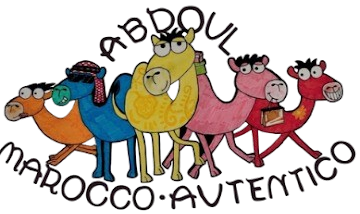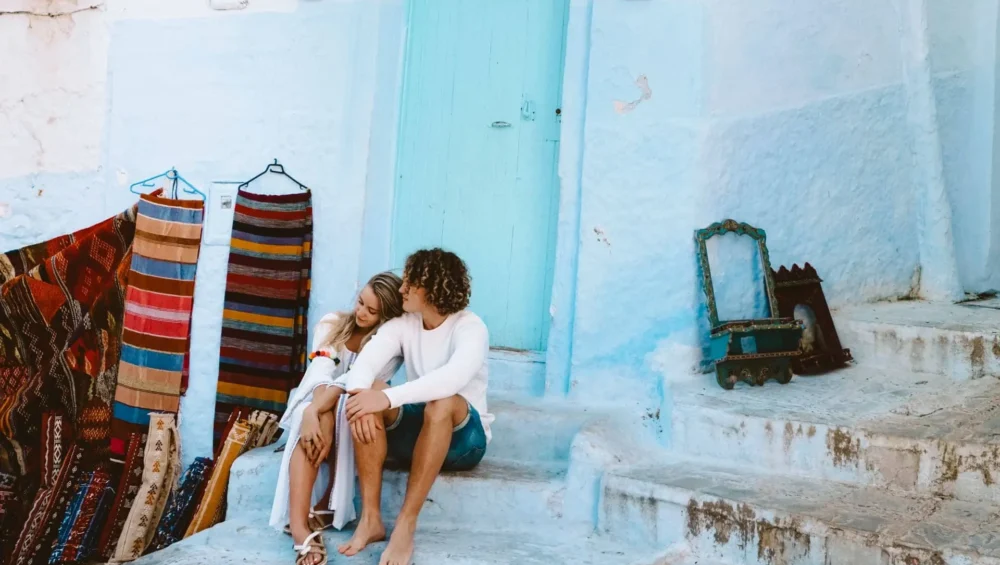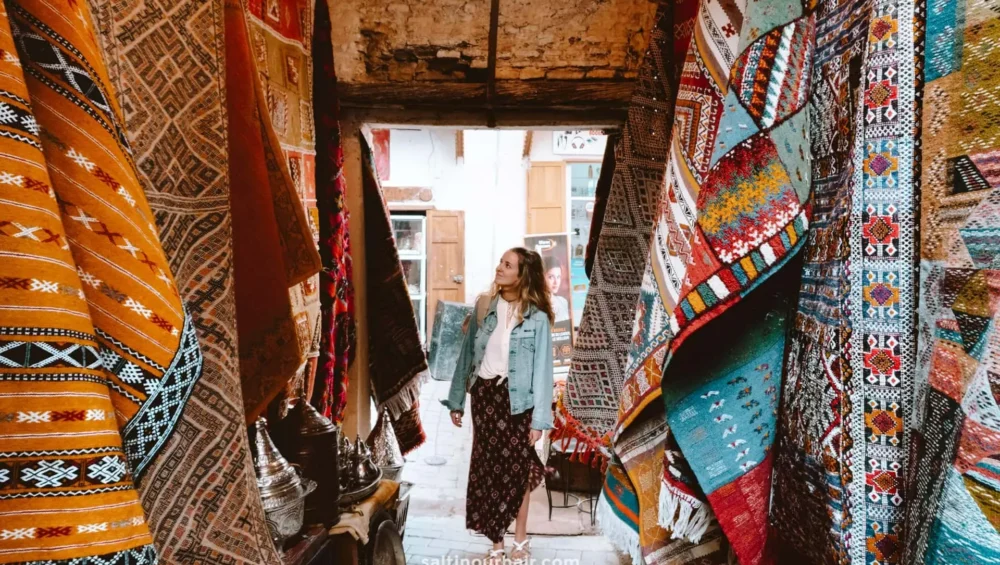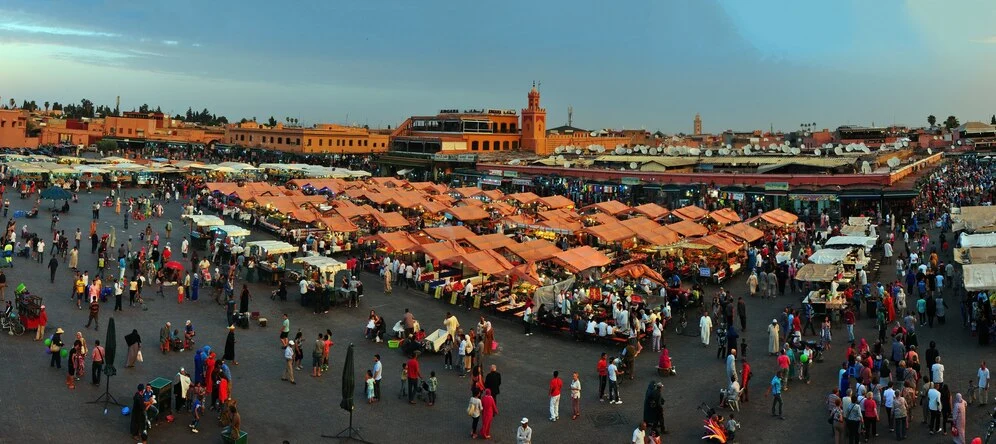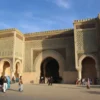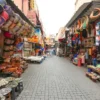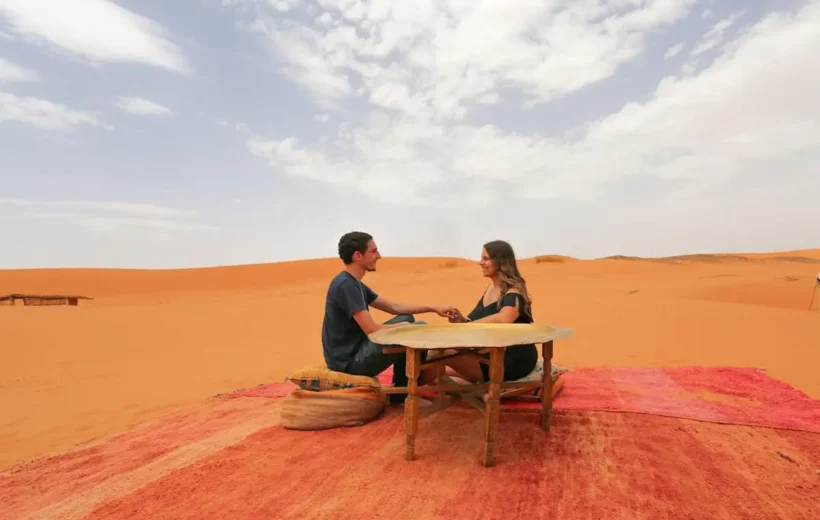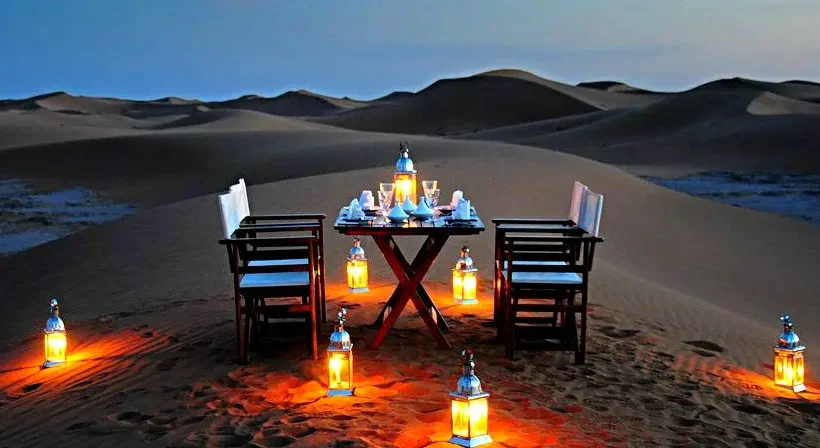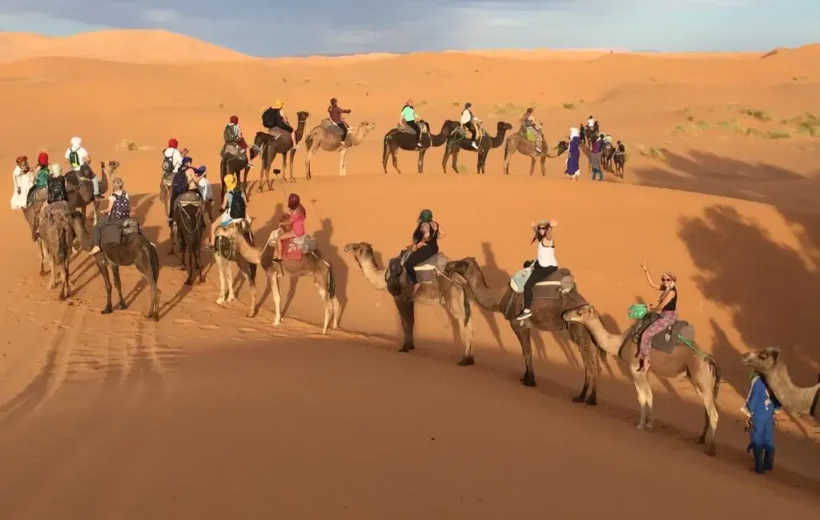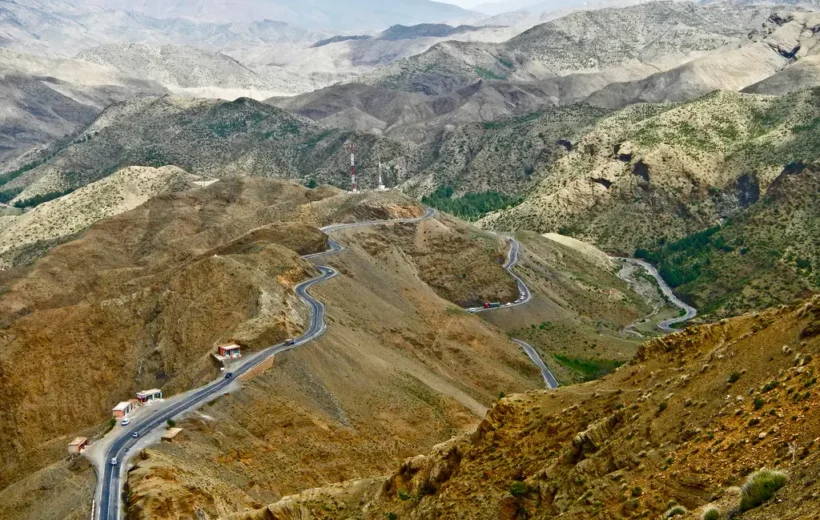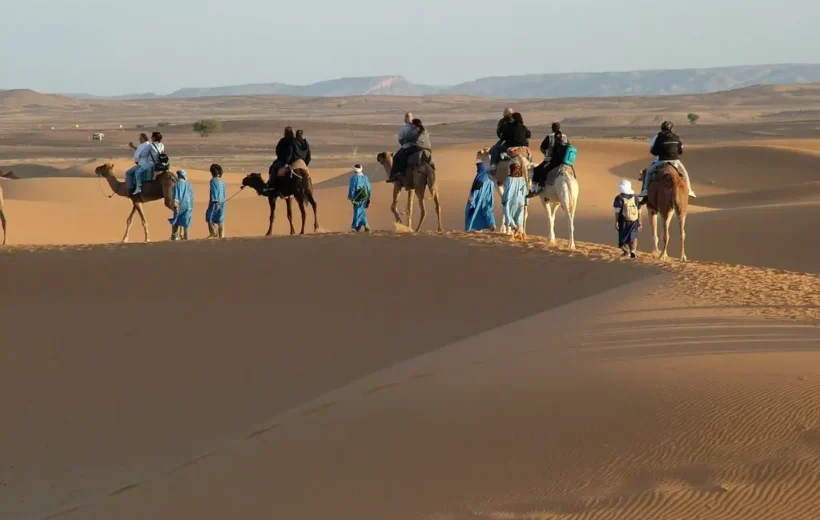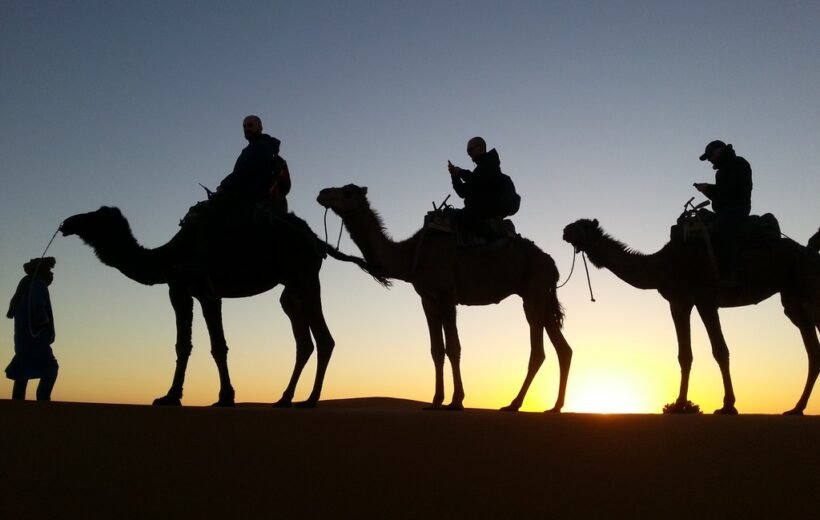9 Best Things To Do In Chefchaouen, Morocco
9 Best Things To Do In Chefchaouen, Morocco
Chefchaouen: known as the ‘Blue Pearl’ of Morocco, because of its fantastic blue houses and streets. Jewish immigrants painted the houses blue, and people have been guessing for years as to why. It is this mystery that gives the city its charm and makes it a long-standing popular tourist destination. Spend a day or two enjoying all the best things to do in Chefchaouen, and three days, or more, if you want to enjoy the stunning nature of the surrounding Riff Mountains.
1. Wander the Blue Streets
The number one reason to visit Chefchaouen is for its beautiful streets, filled with houses painted a variety of blues. There are many theories as to why the walls are blue. Some say it’s for practical reasons, such as keeping mosquitoes away or keeping the houses cooler.
Others say that the blue represents sky and heaven, the colors of the Mediterranean sea, or the nearby Ras el Maa waterfall. Now, locals continue to paint their houses blue, either in line with these traditions, or to keep attracting tourists, who visit Chefchaouen for its picture-perfect streets.
Chefchaouen is much quieter and calmer than other cities in Morocco, so you can spend hours here calmly wandering the blue alleys, and taking photos of cute porches and doorways in the sun. The blue houses of this city are easily the top thing to do in Chefchaouen!
Note: Make sure to be respectful at all times, as local people do live inside the houses. Some ‘Insta famous’ doorways will charge you a small fee to take a photo.
2. Watch the Sunrise or Sunset in Chefchaouen
Sunrise and Sunset in Chefchaouen are both magical times of the day in this city. Add this as one of your things to do on your Chefchaouen itinerary. Wake up in the early morning, get to the rooftop of your riad, and enjoy the most magical sunrise you will see during your trip. Alternatively, enjoy this magical moment from higher up, by enjoying one of the many hikes out of the city up into the Riff Mountains. This is highly recommended to get a fantastic view of the city!
3. Visit the Spanish Mosque
The Spanish Mosque is a beautiful building that sits isolated on a hill above Chefchaouen. The mosque was built in the 1920s, during the war. However, it was never actually used and now sits abandoned, looking out across the city. It is an easy 30-minute hike to the top, where you will be rewarded with incredible views
Seeing the sunset is magical here, as the golden colors hit the background of the earthy Riff mountains. However, at this time there can be crowds as it is one of the most popular things to do in Chefchaouen. If you prefer it to be quieter, take a very early morning hike to see the sunrise instead.
4. Shopping in the Medina
Visit the narrow blue, twisting streets of the Medina, and its souks! The souks may not be as big as in other Moroccan cities like Fes but it remains a popular shopping destination. This is because it offers many native handicrafts that are not available anywhere else in Morocco, such as wool garments, woven blankets, and woven baskets.
In between the handicrafts, you’ll often find pots of bright-colored paint powders in a variety of pastel colors, which is a beautiful scene against the backdrop of blue walls. Goats cheese is also popular with tourists and served with many dishes. Well worth a try, and a tasty thing to do in Chefchaouen.
5. The Kasbah Museum
In the main square, sits the Kasbah: an old Moroccan fort. This building has served many purposes through the ages, most notably as a prison, and now it is an ethnographic museum and art gallery. Inside there are also beautiful Spanish style gardens, which provide a nice area of calm away from the city. Learn about the fascinating history of this area, through the ancient artifacts, clothing, instruments, and traditional decorations and crafts on display. The fort tower can be climbed to discover beautiful views over the city.
Entrance fee: 60 MAD. Note that the descriptions in the tower are not in English.
6. Plaza Uta El-Hammam
Many things happen around the hustle and bustle of the main square in Chefchaouen: Plaza Uta El-Hammam. Sitting in the center of the medina, the square is surrounded by restaurants, shops, the Kasbah, and the Grand Mosque. The Grand Mosque is still used for religious worship so it is not open for tourists, however, its unique octagonal minaret can be viewed from the square. Sit by the tree, in the center of the cobbled square, and people watch for a break from sightseeing – a fun thing to do while in Chefchaouen.
7. Enjoy the Nature Around Chefchaouen
The Riff mountains provide the perfect setting for beautiful nature and wildlife. We didn’t leave the town ourselves but we’ve heard good experiences from fellow travelers about these spots:
- Ras El Maa Waterfall. This is a small but beautiful waterfall situated on the outskirts of the medina, amongst pretty woodland. Sit and enjoy a mint tea here, dangle your feet in the cool mountain water, and watch locals wash their clothes here. It can be reached via the hiking trail that takes you up to the Spanish Mosque, so it is a nice thing to do in Chefchaouen if you have time to stop while passing by.
- Jeb Al Kalaa. This is the mountain overlooking Chefchaouen. This is an intermediate hike of about 6-8 hours. The trail can be hard to follow, so be confident in your navigation or book a guide to lead you. Once at the top, there are phenomenal panoramic views over the mountains and the blue city below. An amazing thing to do in Chefchaouen if you have a day to spare.
- Talassemtane National Park.– less than 45 minutes’ drive from Chefchaouen is this fantastic national park, full of natural wonders. Hire a guide to take you on some memorable hikes here.
- Bridge of God and Akchour Waterfalls. Sitting within the Talassemtane National Park is the area of Akchour, filled with stunning emerald pools, waterfalls, and canyons. Make sure to visit the Akchour waterfalls and the Bridge of God, which is an impressive natural stone arch 25 meters above the gorge. Both are reached on foot, via steep hiking trails, so prepare yourself for a bit of a walk!
8. Experience Delicious Food
The flavor of Moroccan food is unlike anything else. On each corner of the cute streets, you will find homemade bread baked by people in their wood-fired ovens. At restaurants, they serve typical Moroccan dishes of couscous, fish, spices, and vegetables. Enjoy sitting on beautiful Morrocan cushions, in romantically lit dining rooms, eating tagine out of a locally made tagine bowl – a truly authentic way to understand the culture of Morocco and Chefchaouen.
Don’t forget to try a cup of freshly made mint tea. This is a tradition in Morocco, not just for the social aspect but for the health benefits, as well.
Tip: Head to Chez Aladdin, for its terrace, with stunning rooftop views over the city (located just off the main square). For lunch or dinner, we also highly recommend Restaurant Populaire Bab Ssour. Breakfast is best enjoyed in the main square!
9. Take the Beautiful Bus Ride to Fes
If you’re traveling around Morocco, it’s a good choice to take the local bus to, or from, Fes. The beautiful scenery you will see as you travel through the magical landscapes of Morocco is well worth a few hours on a bus. Better still, is the breathtaking view of Chefchaouen, as you approach the city for the first time. Take one of the CTM buses (the biggest operator in Morocco), and enjoy a comfortable ride of approximately 4 hours.
Hotels and Riads Chefchaouen
Chefchaouen has many great accommodation options. Stay in a traditional riad for the most authentic experience. Most of the riads and hotels range from budget to high-level luxury. Many of the riads on the more luxurious end will also have spas to enjoy! Be aware that staying inside the medina itself can be a bit more expensive, however, there are some good hostel options here too.
Getting to Chefchaouen & Getting around
Due to its wonderfully remote location among the mountains, Chefchaouen isn’t the easiest to get to, but it’s well worth the journey! The city can be reached by rental car, taxi, or local bus from Tangier (2,5h) and Tetouan (1,5h). It’s not possible to fly or take the train to Chefchaouen, but both Tangier and Tetouan have an airport.
Once in Chefchaouen, the city is walkable. A lot of the nature spots can also be seen via hiking on one of the many trails that lead out of the city.
Best Time to Visit Chefchaouen
The weather in Chefchaouen is at its best around spring (March to May) and autumn (September to November). The climate is fairly mild, in comparison to the rest of Morocco, because of its high mountain location. In the summer, people from hotter parts of Morrocco will come on vacation to this area because of the pleasant temperatures.
